Abstract
Sample preparation for enumerating attached bacteria in turbid seawater by epifluorescence microscopy was improved by treating samples with a surfactant (Tween 80) followed by sonication. With optimal treatment with Tween 80 (final concentration, 10 ppm [10 μg/ml]) and sonication, as many as 10 times more attached bacteria were enumerated from turbid seawater relative to the number enumerated from an untreated control. Dispersion of bacteria by sonication alone resulted in the enumeration of only 42 to 72% of the attached bacteria. By this technique, fluctuations in the number of attached and free-living bacteria were determined in water from Aransas Pass, Tex., where surface sediments are resuspended on a regular basis by tidal currents. The abundance of attached bacteria increased in proportion to the seawater turbidity that resulted from sediment resuspension. The variation in abundance of free-living bacteria was not directly related to seawater turbidity. However, the magnitude of fluctuation in the abundance of free-living bacteria was related to the extent of turbidity variation during diurnal tides.
Full text
PDF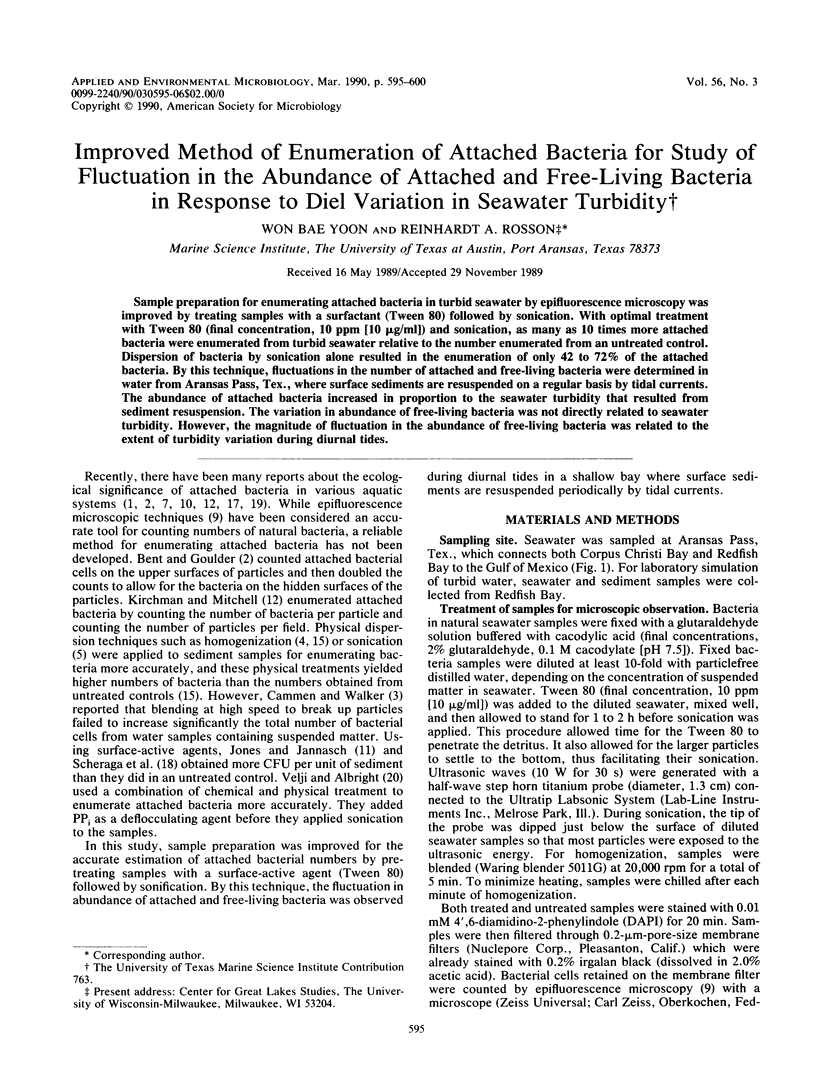
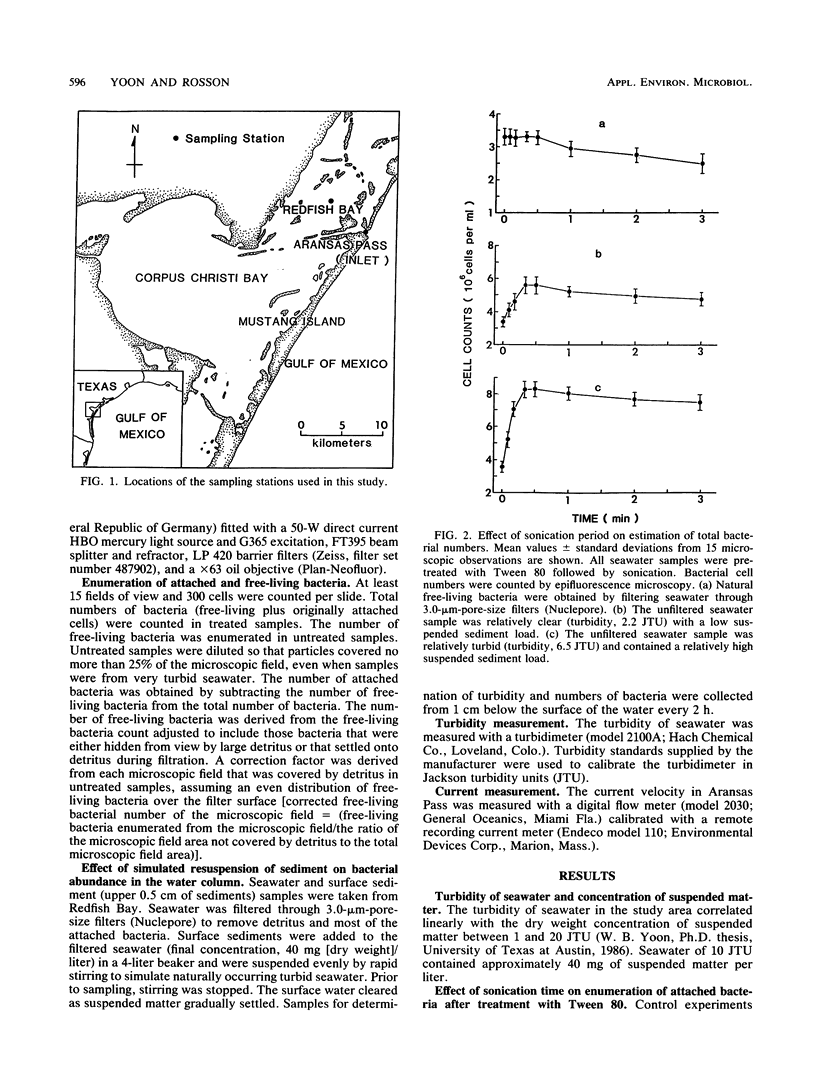
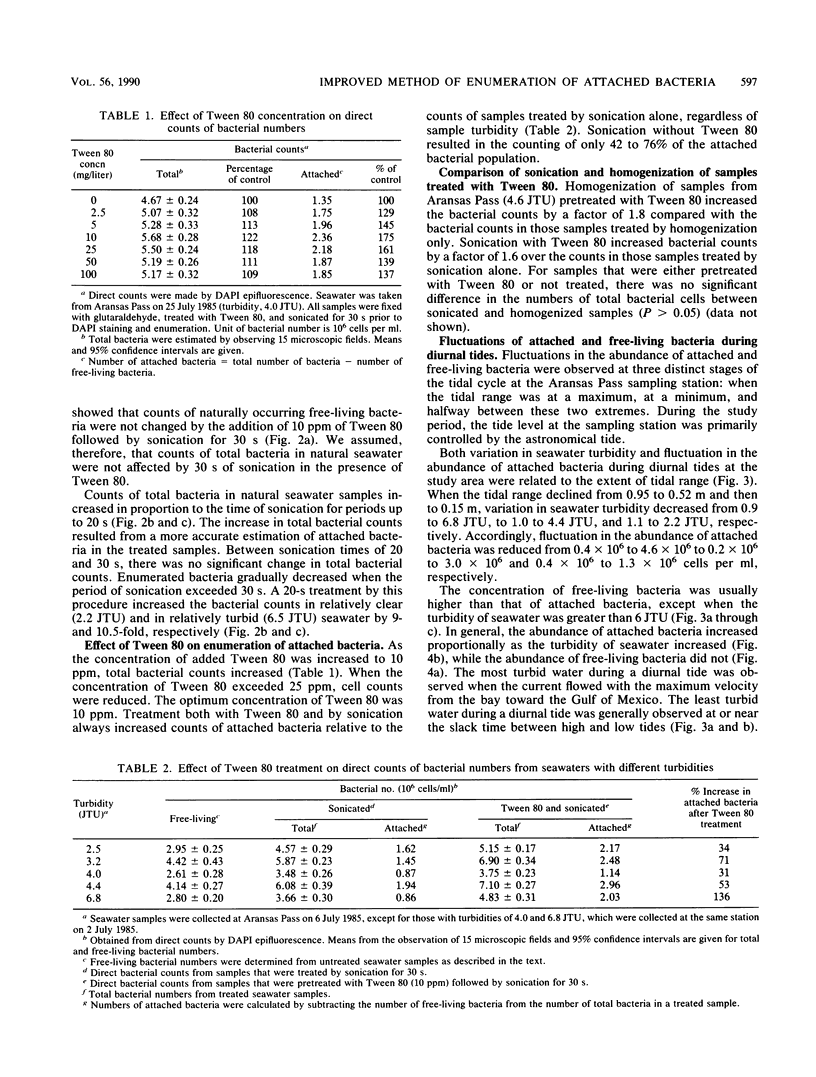
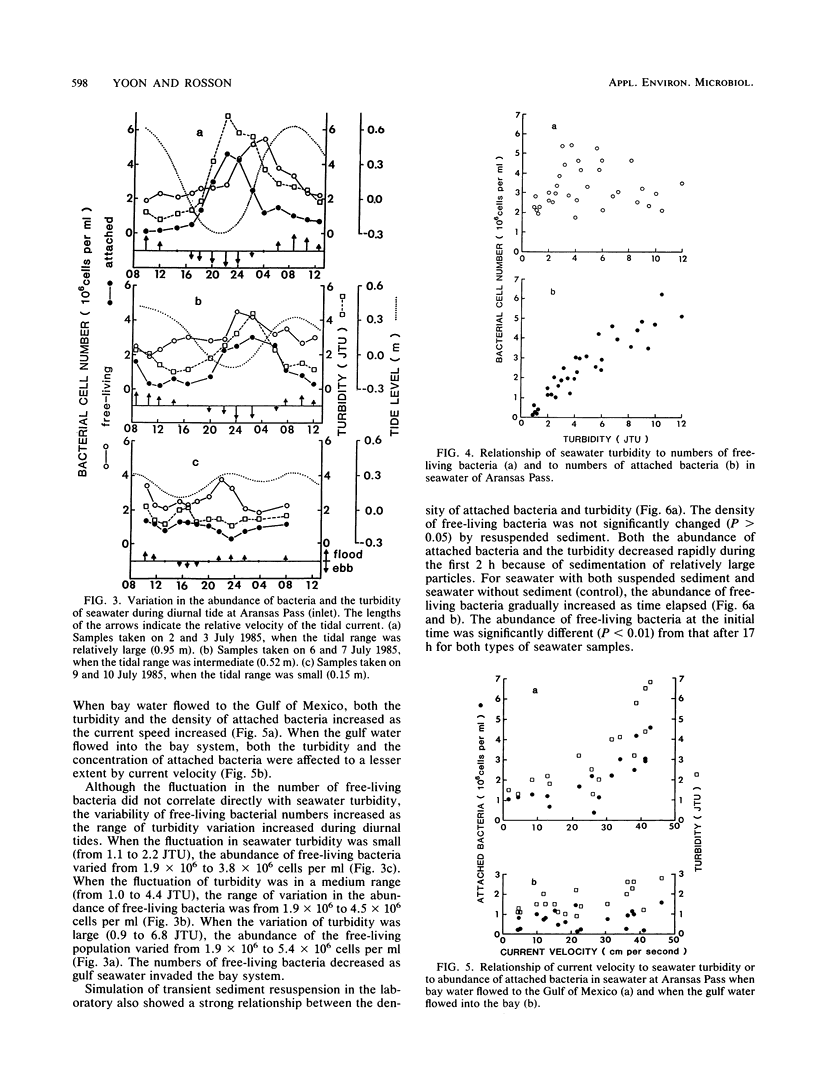
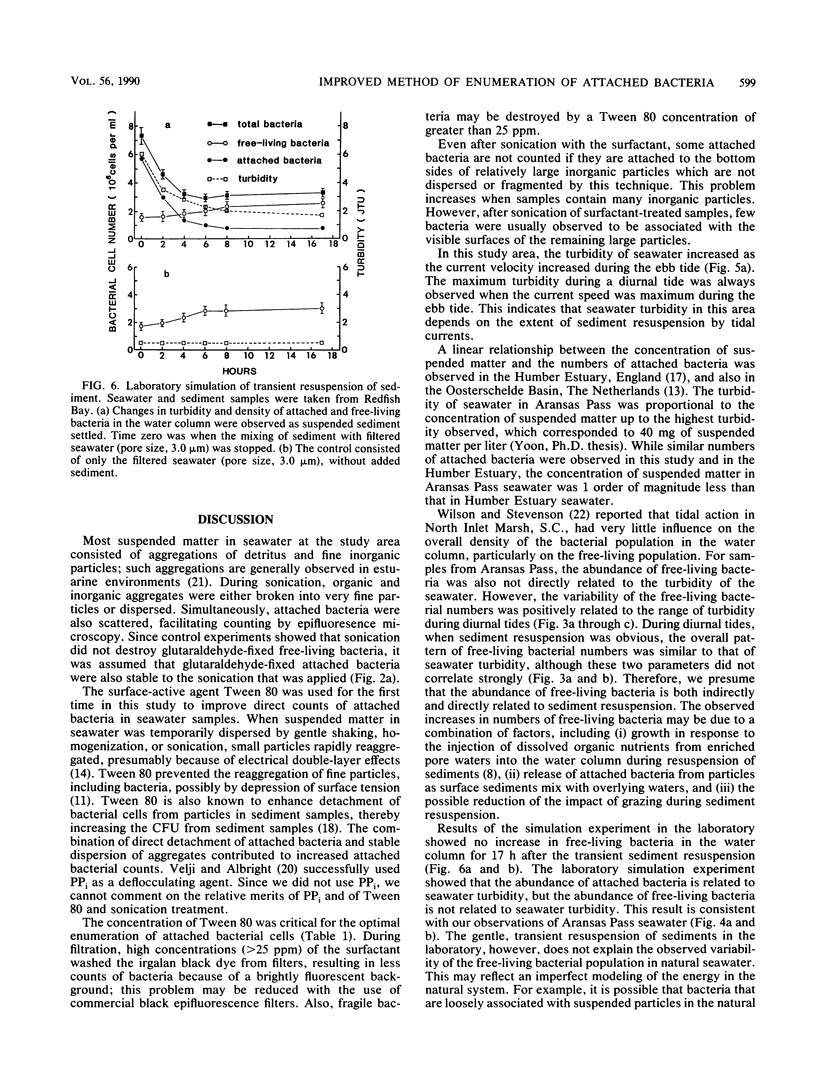
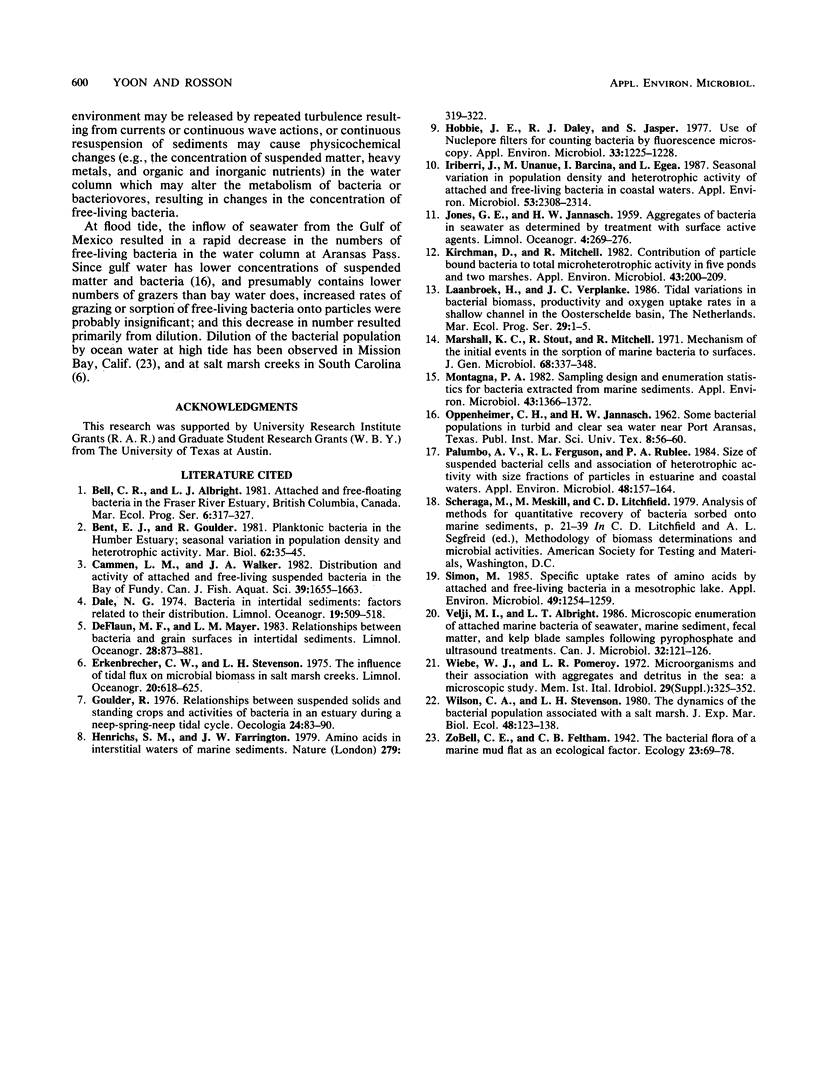
Selected References
These references are in PubMed. This may not be the complete list of references from this article.
- Hobbie J. E., Daley R. J., Jasper S. Use of nuclepore filters for counting bacteria by fluorescence microscopy. Appl Environ Microbiol. 1977 May;33(5):1225–1228. doi: 10.1128/aem.33.5.1225-1228.1977. [DOI] [PMC free article] [PubMed] [Google Scholar]
- Iriberri J., Unanue M., Barcina I., Egea L. Seasonal variation in population density and heterotrophic activity of attached and free-living bacteria in coastal waters. Appl Environ Microbiol. 1987 Oct;53(10):2308–2314. doi: 10.1128/aem.53.10.2308-2314.1987. [DOI] [PMC free article] [PubMed] [Google Scholar]
- Kirchman D., Mitchell R. Contribution of particle-bound bacteria to total microheterotrophic activity in five ponds and two marshes. Appl Environ Microbiol. 1982 Jan;43(1):200–209. doi: 10.1128/aem.43.1.200-209.1982. [DOI] [PMC free article] [PubMed] [Google Scholar]
- Montagna P. A. Sampling design and enumeration statistics for bacteria extracted from marine sediments. Appl Environ Microbiol. 1982 Jun;43(6):1366–1372. doi: 10.1128/aem.43.6.1366-1372.1982. [DOI] [PMC free article] [PubMed] [Google Scholar]
- Palumbo A. V., Ferguson R. L., Rublee P. A. Size of suspended bacterial cells and association of heterotrophic activity with size fractions of particles in estuarine and coastal waters. Appl Environ Microbiol. 1984 Jul;48(1):157–164. doi: 10.1128/aem.48.1.157-164.1984. [DOI] [PMC free article] [PubMed] [Google Scholar]
- Simon M. Specific uptake rates of amino acids by attached and free-living bacteria in a mesotrophic lake. Appl Environ Microbiol. 1985 May;49(5):1254–1259. doi: 10.1128/aem.49.5.1254-1259.1985. [DOI] [PMC free article] [PubMed] [Google Scholar]


